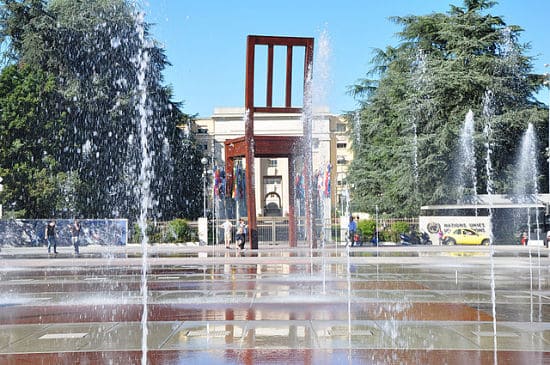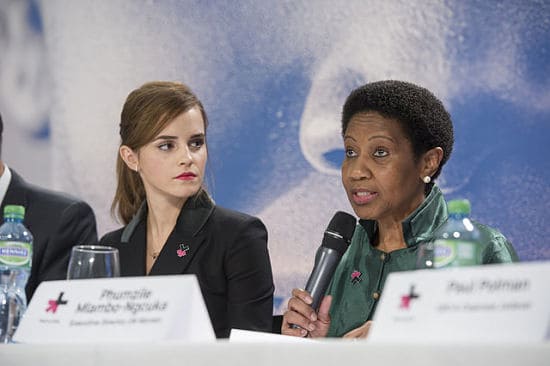I spent much of my fieldwork at a department of the UK Government grappling with a confusing dynamic between civil servants I worked with, and their ‘stakeholders’ from the civil society and large businesses. At formal meetings about the policy that the Department implemented, those attending did their best to hide their feuds and divisive interests in order to create an atmosphere of consensus. After the meetings, be it during bureaucratic de-briefs or private phone calls, people mobilised all their knowledge of relationships among their colleagues, of their interests and conflicts, in order to decode what actually had been said and done in the formal settings of the meetings. If the policy was to be implemented successfully, consensus and harmony had to reign in the assemblies. But it only made sense to people through the lens of the organisational backstage.
 The accounts collected by Birgit Müller in the ten chapters of her volume The Gloss of Harmony provide for an interesting read that will resonate with the fieldwork experience of many researchers studying formal organisations. The essays persuasively explain how conflicts and tensions around the production of international norms are dissolved and dissipated by ‘technical’ means to generate consensus and make the world governable without really governing it. Authors have all conducted fieldwork within multilateral international organisations of the UN system that have little if any constraining mechanisms, yet are tasked with governing such important areas as human rights, protection of biodiversity, and environmental management. The lens of organisational ethnography has allowed researchers to follow policy negotiations at great length, and to account for how these negotiations relate to and enact institutional and normative frameworks of the organisations. As Müller puts it, the “chapters point to the disarticulation between practices of and in these organisations and their rationalising models” (p.3).
The accounts collected by Birgit Müller in the ten chapters of her volume The Gloss of Harmony provide for an interesting read that will resonate with the fieldwork experience of many researchers studying formal organisations. The essays persuasively explain how conflicts and tensions around the production of international norms are dissolved and dissipated by ‘technical’ means to generate consensus and make the world governable without really governing it. Authors have all conducted fieldwork within multilateral international organisations of the UN system that have little if any constraining mechanisms, yet are tasked with governing such important areas as human rights, protection of biodiversity, and environmental management. The lens of organisational ethnography has allowed researchers to follow policy negotiations at great length, and to account for how these negotiations relate to and enact institutional and normative frameworks of the organisations. As Müller puts it, the “chapters point to the disarticulation between practices of and in these organisations and their rationalising models” (p.3).
Focusing on mechanisms of governance that result from tensions between organisations’ aspirations and goals, and their mandate, the authors describe the work that goes into negotiating policies by consensus.
For example, Marion Fresia (chapter three) focuses on the “making of global consensus” on refugee protection norms at the Executive Committee of UNHCR. Exploring perspectives of different actors involved in the “tense and fragmented arena” of negotiations (p.64), and relationships among them, Fresia suggests that “international organisations […] formulate and implement norms and policies that cannot be described in a realist and instrumentalist way as the simple product of interstate bargaining or of western imperialism. Nor do they appear as the mere expression of the institutional interests of international experts or international organisations” (p.70, reference omitted). These norms and policies, she argues, result from a complex dynamic of relationships among different actors, who are also differentially involved in negotiations.
Similarly, Tobias Kelly (chapter six) describes how the bureaucratic procedures of the international system of human rights monitoring are not simply transparent forms of information-gathering, but can hide as much as they reveal. In particular, Kelly argues that “[a]s a result of the technical ways in which human rights obligations are interpreted, the shame of torture is dispersed into arguments about procedure” (p.135). In her essay on the genealogy of the international oversight of rights (chapter five), Jane Cowan traces changes in the value placed upon organisational transparency. She observes that whereas in the Minorities Section of the League of Nations behind-closed-doors negotiations were a preferred method, in the present-day UN Universal Periodic Review transparency is performed to the global public, even though it comes with its own obfuscations (p.126).
Like Cowan, who describes the complexity of social arrangements through which the states mobilise support and contest attempts of international organisations to exercise influence, Brigitta Häuser-Schaublin pays attention to brokering and delicate negotiations about the restitution of cultural artefacts at UNESCO. Suggesting that such negotiations are laden with powerful symbolism — e.g. of decolonisation, or loss of face and shame for former colonial powers — the authors conclude that the governance of artefacts’ return deals not just with the practicalities of return as such, but also with the symbolic value attached to contested artefacts.

Revealing the social and normative complexity of international norms of soft law, essays by Fresia, Bendix (chapter one), Cowan, Kelly, and Hauser-Shäublin complicate our understanding of the organisations they study, and of the relationships between norms, official policy documents, and practices of knowledge formation. The chapters by Müller and MacDonald focus on the other end of the spectrum, looking at the practical implications of the “gloss of harmony” at sites of policy implementation.
All of the essays explore bureaucratic practices and political interests through which policy decisions and blueprints are articulated and made coherent. In this, they source their inspiration from David Mosse’s (2005) work on development policy. Thus, in her introduction, Müller suggests that the volume belongs to the line of organisational anthropology that instead of showing how an institution thinks, “explore[s] how people think and act inside the organisation” (p.5). This is refreshing, as much of the existing literature on the topic tends to adopt a critical stance that reduces the complexity of organisational sociality to either assumed political or economic interests, or analytically discernible outcomes, such as the promotion of neoliberalism.
Yet, although describing and explaining the complexity of the social lives of policy in international organisations, these rich and insightful accounts tell their readers little by way of ethnographic exploration of how exactly “people think and act inside organisation”. Complexity here is an effect of juxtaposition of actors’ perspectives, rather than an artefact of detailed description of personal trajectories, actions and aspirations. This certainly does not take away from the analytical merits of the volume, but a more ethnographic description of what goes on at meetings and offices, of the mundane work of policy writing and negotiation, and of the material media through which this work takes place, would have only made it better.
In my opinion, the chapters are at their best when they discuss exactly what might seem mundane, uninteresting, and intentionally devoid of conflict.
Document form, the specificities of technical interpretation of policy “language”, bureaucratic procedures and expert knowledge all fall into this category. Antithetical to politics because they are “technical”, they are but politics by other means, we are told, as for example in Peter Bille Larsen’s chapter on best practice guidelines on environmental management. Larsen (chapter four) interestingly characterises the non-binding normativity of guideline documents as unstable, stating that “[t]heir non-definition may in fact be seen as a defining quality or property allowing for their elasticity and perceived utility” (p.79). This insight into the form of international soft norms goes some way in explaining how the norms hold across contexts and for different actors. Larson’s argument is reminiscent of the work of Annelise Riles (2000) and Tess Lea (2008), both of whom showed, for the UN Conference on Women and the Australian Territorial Health Service respectively, how consensus is often a matter of the form of documents, and the affordances that this form possesses. Larson’s argument also echoes that of the other contributors (esp. Bendix, Fresia, Kelly), who, in Müller’s words, describe how policy “[d]rafts are tamed until they become acceptable and polite, cleansed of their conflictive elements and rendered ‘technical’” (p.8, reference omitted).

At the same time, looking for politics, the book seems to overlook what else could be at stake for people who inhabit and transit through organisations in question, or even how exactly these people relate to the politics of policymaking that the authors identify. Equally, the reader won’t find much about ethical, epistemic or aesthetic commitments that these people might have to, say, consensus decision-making or technical means that help them achieve consensus.
This might well be an effect of the peculiarities of fieldwork in international organisations, which as Bendix says is ethnographically taxing. The dynamics of communication is dense, people are many and difficult to follow, and access is difficult to obtain. The editor and some of the contributors explicitly acknowledge that “doors to negotiation rooms [can be] closed to the external observer” (p.6). This acknowledgment, however, begs a question: how do the formal settings of meetings and committees, which the researchers observe and analyse, relate to the parts of organisational ‘lives’ that remains invisible to the ethnographic eye? What do we lose by not being able to observe the mundane flow of organisational sociality, and analysing instead the public performances of organisations at meetings? Where do the meetings enacting the gloss of harmony, which the essays so artfully deconstruct, fit in terms of broader processes of organisation? It’s difficult to answer without access to that which remains behind the closed doors.
The Gloss of Harmony doubtlessly is a useful book, for it demonstrates both the strengths of ethnographic study of international organisations, and the limits of our method. It is a rich collection, and its essays cover a lot of ground and are thus difficult to do justice to. All in all, it is a necessary read to those working in similar fields, especially because of the way the essays ground the production of international norms in the organisational dynamics of UN institutions.
References
Lea, Tess. 2008. Bureaucrats and Bleeding Hearts: Indigenous Health in Northern Australia. Sydney: UNSW Press.
Mosse, David. 2005. Cultivating Development: An Ethnography of Aid Policy and Practice, London and Ann Arbor, MI: Pluto Press.
Riles, Annelise. 2000. The Network Inside Out. Ann Arbor, MI: University of Michigan Press.
**************
Featured photo by Flazingo Photos (flickr, CC BY-SA 2.0)
This post was first published on 23 November 2015.





